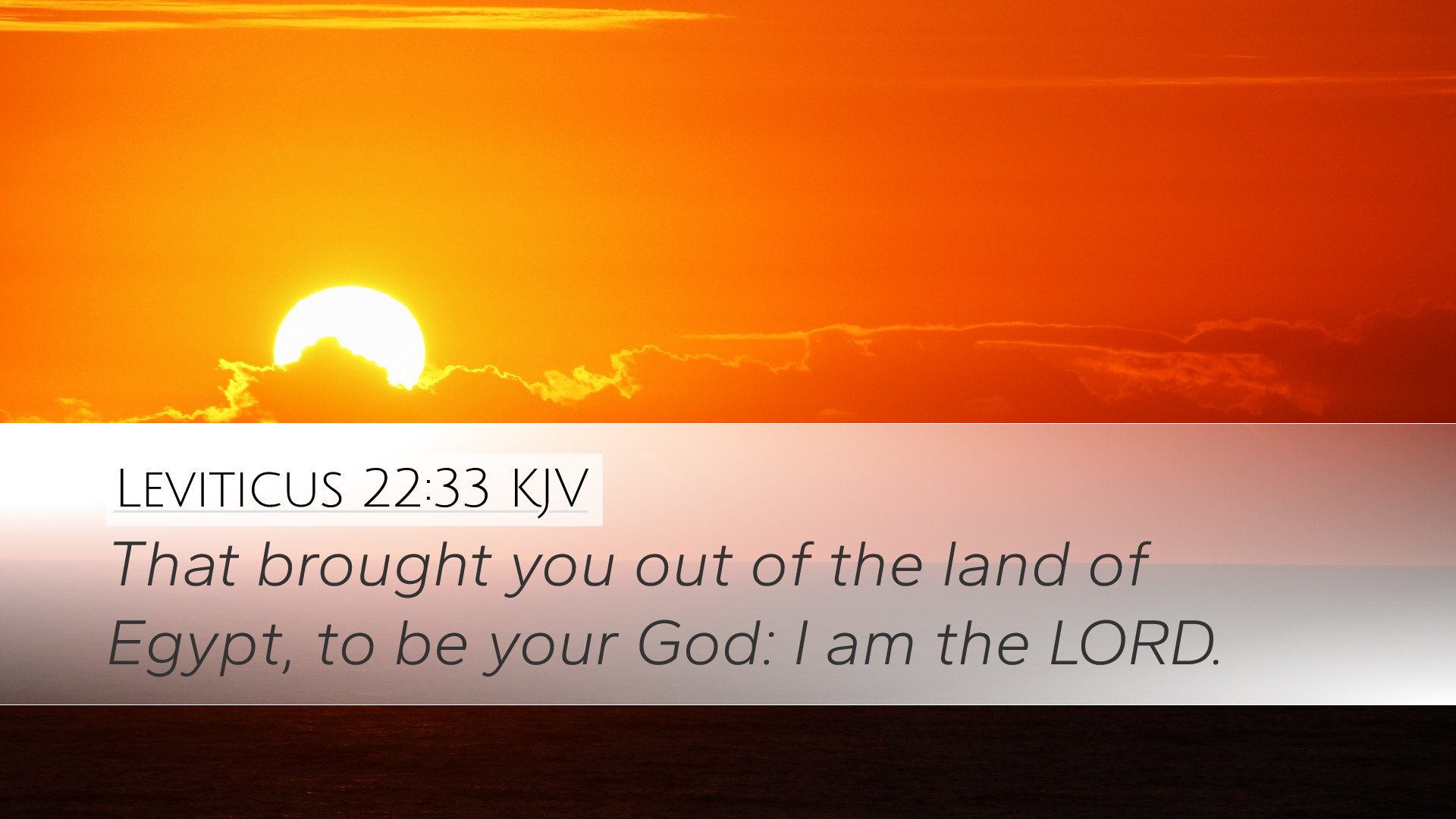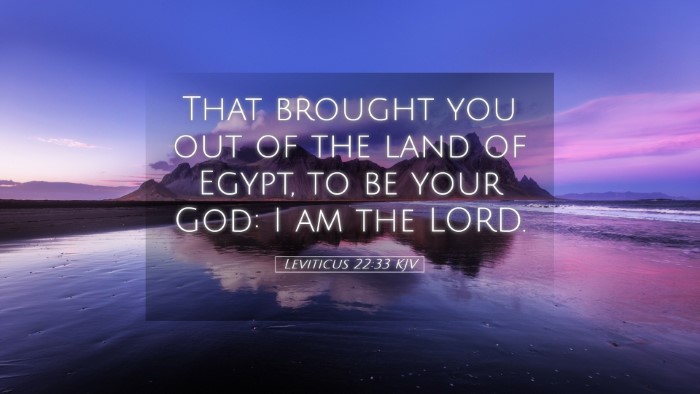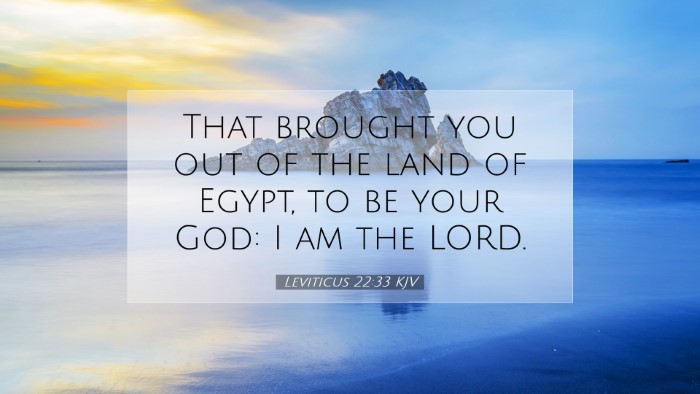Bible Commentary on Leviticus 22:33
Verse: "I am the Lord who sanctifies you." - Leviticus 22:33
Introduction
This verse encapsulates a profound theological truth key to understanding the relationship between God and His people in the Old Testament. It emphasizes the themes of holiness, sanctification, and divine authority. The role of God as the sanctifier is central to the worship practices prescribed in the book of Leviticus and offers insight into God's character and His covenant with Israel.
The Context of Leviticus 22
Leviticus 22 pertains to the regulations governing the priest's service and the holiness required of those who approach the Lord. The chapter offers instructions regarding the sacrificial offerings, the animals suitable for sacrifice, and the purity of those who offer them. In this context, verse 33 serves as a reminder of God's defining capability to make His people holy.
Matthew Henry's Insights
Matthew Henry emphasizes the idea of God as the sovereign Lord who requires holiness from His people. He notes that the phrase "I am the Lord" functions to assert God's authority over Israel and His right to command holiness. Henry reflects on the implications of sanctification, stating that it is not just about ritualistic practices but an internal transformation that reflects God's nature in the lives of believers.
Key Themes from Henry:
- Sovereignty of God: God asserts His authority as the ultimate source of holiness.
- Call to Holiness: The call to sanctification is a constant theme throughout Scripture, urging believers to reflect the character of God.
- Divine Sanctification: Only God has the power to make something holy, setting apart His people for His purposes.
Albert Barnes' Reflections
Albert Barnes underscores that sanctification is a necessary preparation for service to God. He points out that in the Old Testament, physical cleanliness and ritual purity were essential for approaching God, and this external observance was meant to symbolize a deeper spiritual reality. Barnes highlights the continuity of this theme in the New Testament, where sanctification becomes a matter of the heart.
Key Themes from Barnes:
- Preparation for Service: Sanctification is necessary for effective service in the worship of God.
- Symbolism of Purity: Physical rituals symbolize a greater spiritual purity required to draw near to God.
- New Covenant Continuation: The concept of sanctification is realized in Christ, who enables believers to approach God with confidence.
Adam Clarke's Commentary
Adam Clarke provides a comprehensive view of the significance of God's declaration "I am the Lord who sanctifies you." He interprets this as an affirmation of God's commitment to His people. Clarke discusses how this sanctification process is both a divine act and a believer’s responsibility, calling on the faithful to respond to God's grace with obedience and reverence.
Key Themes from Clarke:
- Divine Commitment: God’s promise to sanctify His people denotes His active engagement in their lives.
- Human Responsibility: While God sanctifies, there is an expectation for believers to live in accordance with that sanctification.
- Holiness as an Ongoing Process: Sanctification involves both an initial act of God and a continual process throughout a believer's life.
Theological Implications
This verse reflects crucial theological principles foundational to Judeo-Christian beliefs. The sanctification of God extends beyond mere external regulations about sacrifices; it speaks to the moral and spiritual state of the individuals and the community of faith. Understanding God's role as the sanctifier leads to a deeper appreciation of the holiness required in worship and everyday life.
Application for Pastors and Scholars
For pastors and theologians, Leviticus 22:33 should encourage a focus on the nature of God as holy and the implications of that holiness for both personal and communal worship. The call to holiness is not just Old Testament law; it is a New Testament reality as believers are called to be “a holy nation” (1 Peter 2:9). The transformative power of God's sanctification invites deeper exploration into how congregations can cultivate environments that reflect God's holiness in practices and community life.
Concluding Thoughts
In summary, Leviticus 22:33 serves as a reminder of God’s role in sanctification and the holiness that stands at the core of His relationship with His people. Drawing from the insights of respected commentators, we see that this verse encapsulates the need for both divine action and human response in the journey toward holiness. Thus, every believer is called to live in a way that honors this sacred relationship, reflecting the nature and character of the God who sanctifies.


